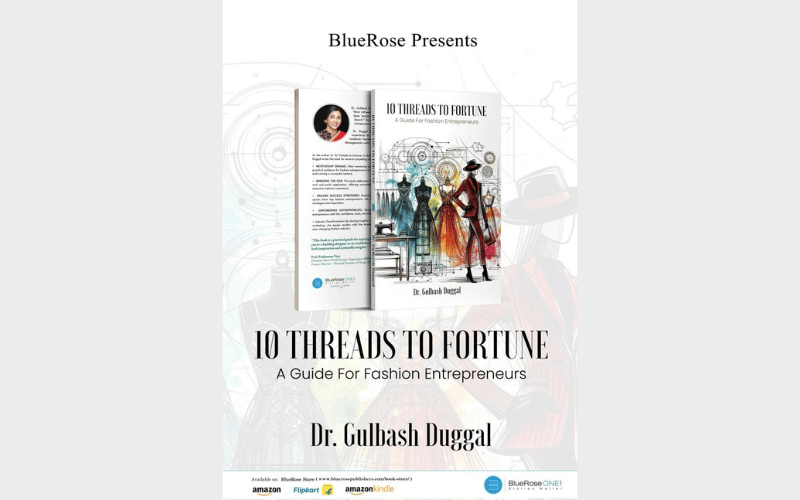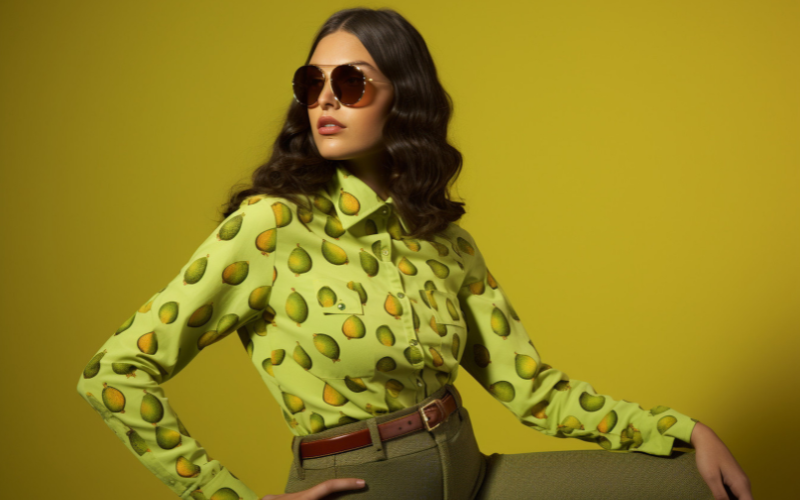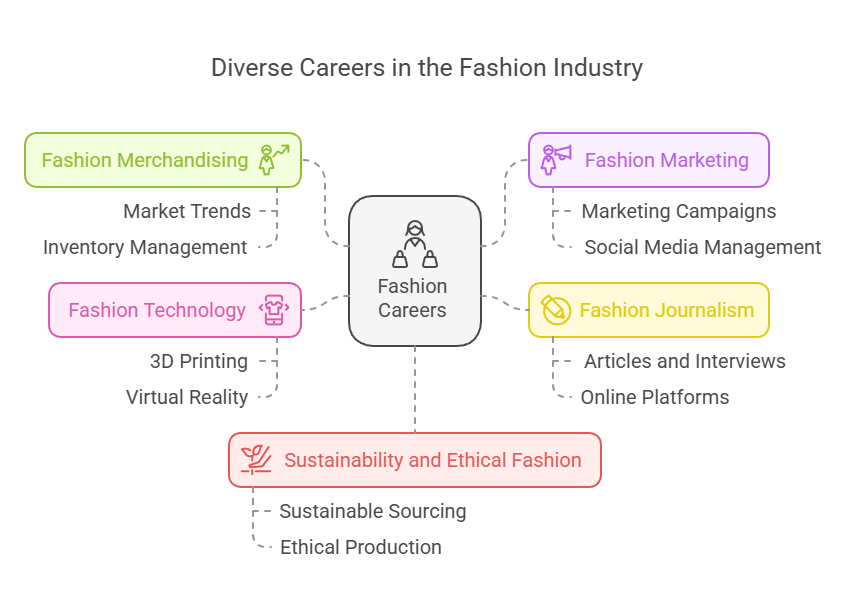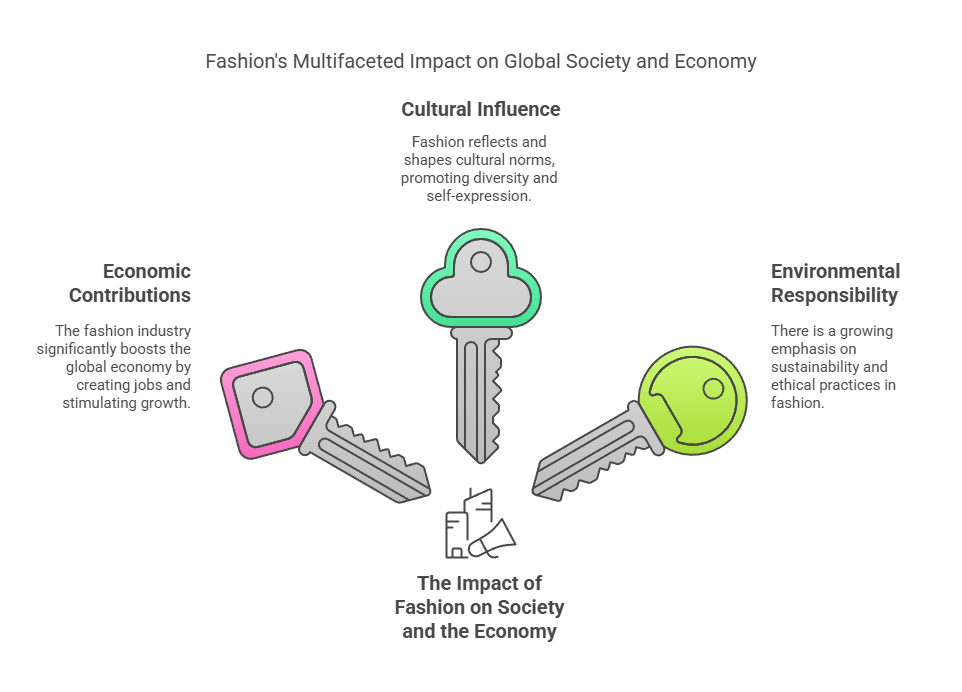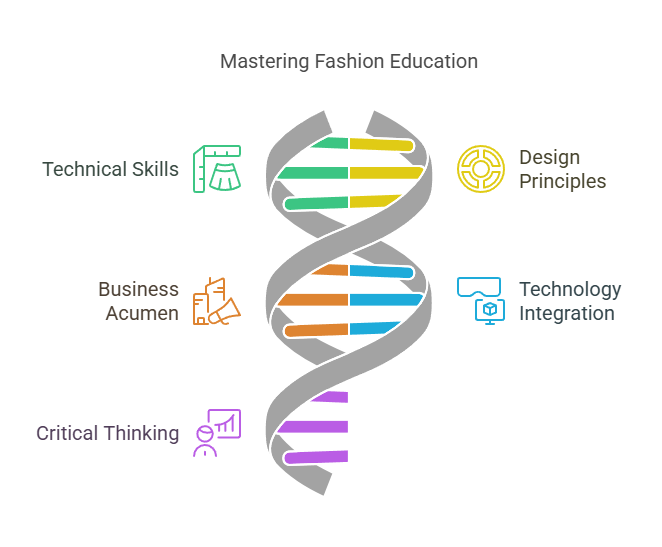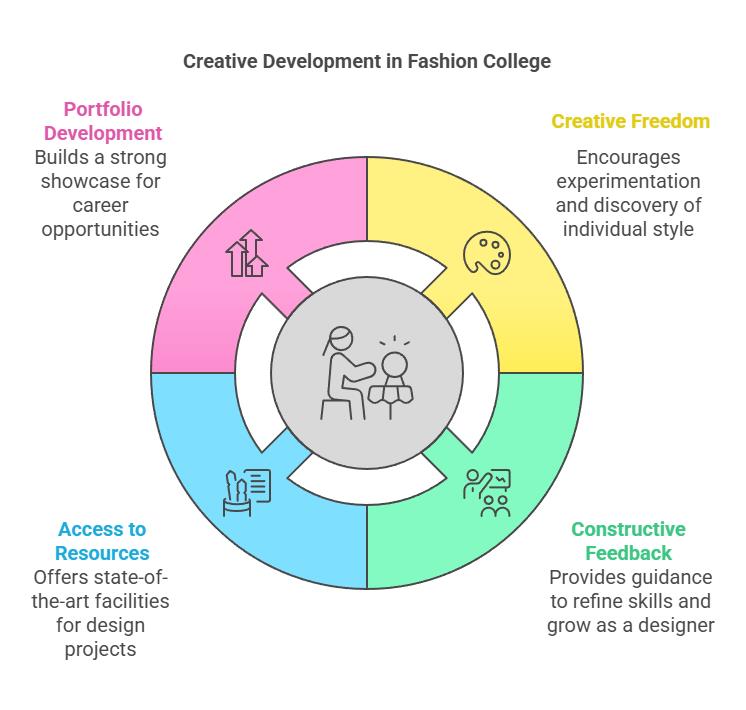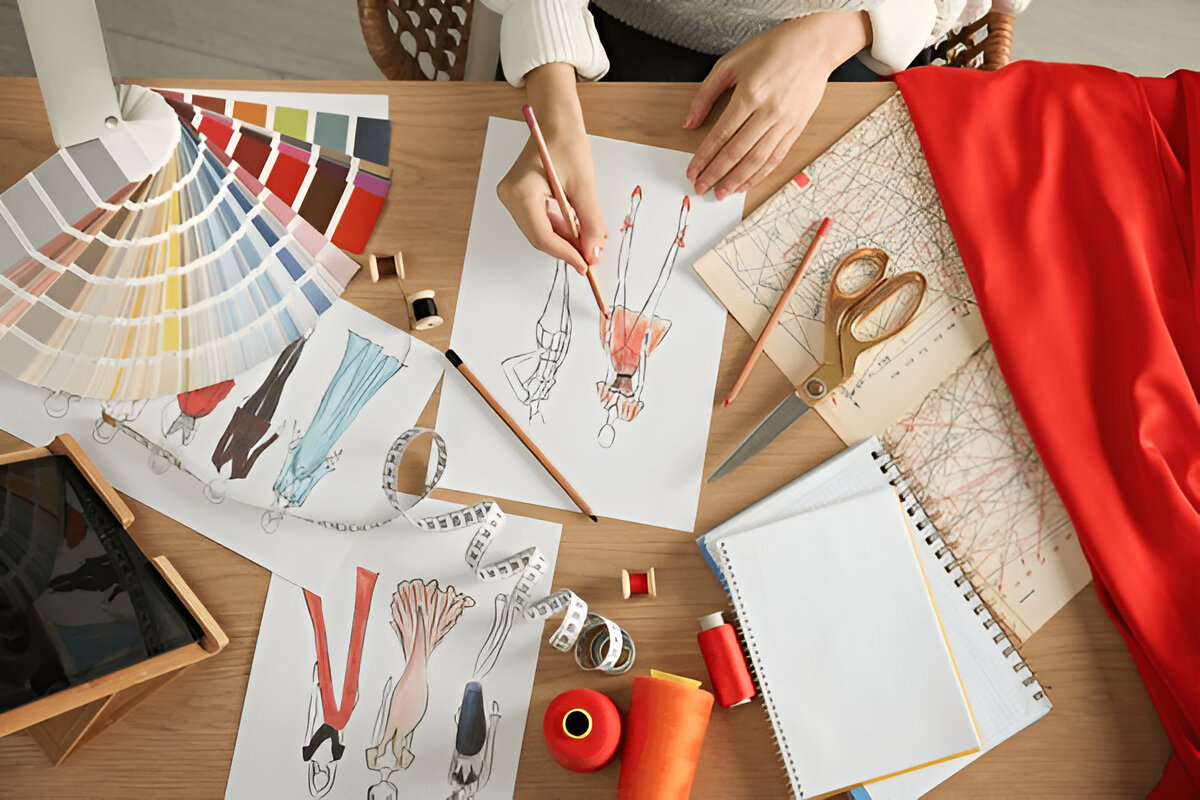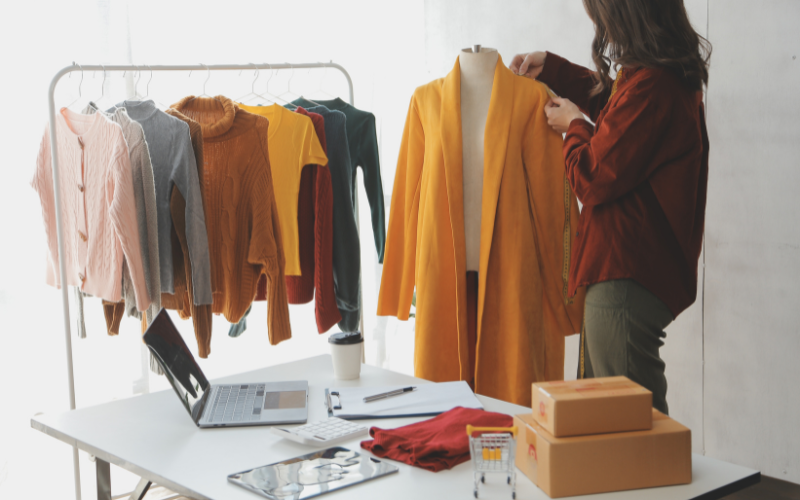Day 1 of Milan Men’s Fashion Week 2025 kicked off with an eclectic mix of structured streetwear, timeless textures, and reinventions of luxury. Representing a global perspective on design education, at the International College of Fashion (ICF), where we closely observe and integrate such showcases into our pedagogy. From experimental silhouettes to artisanal mastery, the opening day gave us more than just looks—it gave us insight into the evolving language of modern menswear. Here’s a curated walkthrough of the standout shows from Friday, June 20th, with key insights for fashion students and educators.
DESIGNER REVIEWS FROM DAY 1
- MTL Studio – Precision Meets Street-wear Innovation
 FOCUS: Techwear, Futuristic Fabrics, Function-Driven Design
FOCUS: Techwear, Futuristic Fabrics, Function-Driven Design
MTL Studio was impressed with an immersive studio installation featuring multi-pocketed silhouettes, modular detailing, and textiles that shifted tone with movement. The looks embodied utilitarian streetwear that felt as much about performance as presentation.
EDUCATIONAL INSIGHT: Students interested in technical fashion should study the principles of garment functionality—modular design, tactical layering, ergonomic seams. MTL Studio also demonstrates how to build a brand language through material innovation rather than just graphics. For those looking into fashion entrepreneurship, consider how streetwear and urban lifestyle solutions can be merged with smart design.
- Uma Wang – Timeless Textures with a Global Soul
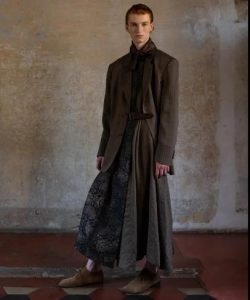 FOCUS: Artisanal Fabrics, Layering, Slow Fashion
FOCUS: Artisanal Fabrics, Layering, Slow Fashion
Uma Wang’s showcase felt like walking into a quiet desert dream. The neutral-toned, oversized silhouettes layered linen, raw silk, and hand-dyed textures. Eastern craftsmanship met Western silhouettes in a journey of subtle storytelling.
Educational Insight: This is where the process becomes a product. Fashion design students can learn a great deal from Uma Wang’s respect for fabric life cycles and hand processes. Each wrinkle, fold, and fade tells a story. If you’re exploring sustainable or slow fashion, this is a brand to study for authentic storytelling through textiles.
- Brunello Cucinelli – Effortless Luxury and Italian Craft
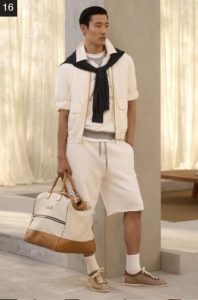 FOCUS: Ethical Luxury, Tailored Casualwear, Heritage Fabrics
FOCUS: Ethical Luxury, Tailored Casualwear, Heritage Fabrics
Cucinelli delivered on his signature promise of relaxed elegance. Earth tones, suede loafers, and beautifully structured knitwear painted a picture of timeless, wearable luxury for the global gentleman.
Educational Insight: This is a luxury with heart. Fashion management students should study how Cuccinelli combines business ethics with brand mythology. His commitment to human-centered workplaces and slow fashion production is a model for conscious entrepreneurship. Luxury isn’t always loud—it can be intentional and intimate.
- Boglioli – Quiet Tailoring for the Modern Minimalist
 FOCUS: Unstructured Suits, Tonal Palettes, Subtle Sophistication
FOCUS: Unstructured Suits, Tonal Palettes, Subtle Sophistication
Known for its unlined tailoring and tonal harmony, Boglioli’s Day 1 collection embraced soft volume and muted tones. Suits that breathed. Shirts that draped. Menswear that murmured style rather than shouted it.
Educational Insight: This is where students of fashion styling and menswear must understand silhouette psychology. Unstructured doesn’t mean unfinished—it requires mastery in pattern-making and an eye for refined finishes. Boglioli’s mastery lies in its ability to elevate simplicity.
- MSGM – Loud Youth Culture Reimagined
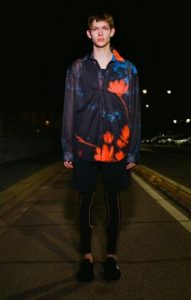 FOCUS: Graffiti Print, Oversized Fits, Street-Ready Color
FOCUS: Graffiti Print, Oversized Fits, Street-Ready Color
MSGM, already a youth favorite, dialed up the chaos in a good way. Neon bomber jackets, metallic cargo pants, and slogan tees drew from youth rebellion and pop nostalgia.
Educational Insight: Students of fashion communication and youth culture must dissect how MSGM speaks to Gen Z and Alpha demographics. The show is a perfect case study in building emotional appeal through chaos theory—color, proportion, and storytelling. This is streetwear with an editorial voice.
- Giuseppe Zanotti – Sculptural Footwear and Shine Factor
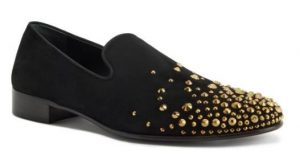 FOCUS: Statement Shoes, Metallic Leather, Runway Glamour
FOCUS: Statement Shoes, Metallic Leather, Runway Glamour
Zanotti’s display highlighted his signature: footwear as jewelry. Gold-finished loafers, crystal-embellished sneakers, and sharply cut boots walked the fine line between street and stage.
Educational Insight: Accessories students should analyze how footwear anchors or transforms an entire look. Zanotti’s ability to deliver both wearable and statement pieces reinforces how accessory design can redefine a collection’s visual tone. Think silhouette, finish, and function.
- Valstar – Elevated Outerwear with Heritage Roots
 FOCUS: Iconic Jackets, Material Innovation, Understated Cool
FOCUS: Iconic Jackets, Material Innovation, Understated Cool
Known for its legendary “Valstarino” bomber, Valstar played with suede, canvas, and water-repellent finishes to create outerwear built for Milan’s streets and beyond.
Educational Insight: For product developers and heritage brand enthusiasts, Valstar is a case study in evolutionary design. Learn how to refresh icons without losing their soul. Innovation doesn’t always mean disruption—it can be refinement.
- Setchu (Live Streaming) – Minimalism Meets Japanese Craft
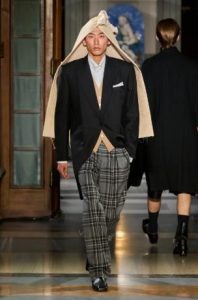 FOCUS: East-West Fusion, Structural Clarity, Sculptural Layers
FOCUS: East-West Fusion, Structural Clarity, Sculptural Layers
Setchu’s online show was all about tension—tailoring vs. drape, tradition vs. innovation. Clean lines, obi belts, and asymmetrical layers created wearable sculpture for the modern man.
Educational Insight: Cultural hybridity is a critical study for global designers. Setchu masterfully bridges worlds without dilution. Study how Setchu retains authenticity while integrating multicultural elements into minimalist silhouettes.
- C.P. Company – Tech Utility with Heritage Spirit
 FOCUS: Garment-Dyeing, Urban Sportswear, Function-Led Design
FOCUS: Garment-Dyeing, Urban Sportswear, Function-Led Design
C.P. Company presented its signature lens-detailed hoodies and utility vests with renewed vigor. Garment-dyed fabrics added depth, while layered looks suggested a future-ready lifestyle.
Educational Insight: For fashion technology and sportswear students, C.P. Company showcases how to marry functional materials with cultural icons. Their dyeing techniques alone deserve a semester’s worth of study. The message: innovation can feel familiar.
- Ralph Lauren Purple Label – Classic Sophistication Reaffirmed
 FOCUS: Elevated Americana, Ivy League Prep, Old Money Elegance
FOCUS: Elevated Americana, Ivy League Prep, Old Money Elegance
Ralph Lauren’s Purple Label show brought lush fabrics, refined tailoring, and yacht-club elegance. It was less about trends and more about timeless aspiration.
Educational Insight: Branding students, take note—this is how emotional loyalty is built. Ralph Lauren sells an aspiration, not just a style. Purple Label’s strength is that it doesn’t follow fashion—it follows legacy. Consistency is its loudest voice.
- Fiorucci (Live Streaming) – Retro Pop Energy
 FOCUS: ’70s Aesthetic, Playful Prints, Youthful Spirit
FOCUS: ’70s Aesthetic, Playful Prints, Youthful Spirit
Fiorucci’s digital presentation was fun, vibrant, and full of attitude. Think bold logos, rainbow stripes, and glitter accents—a disco-era remix for today’s rebels.
Educational Insight: Emotional branding is Fiorucci’s forte. Students of fashion marketing must understand how to weave joy, nostalgia, and rebellion into a cohesive aesthetic. How does your brand feel? Fiorucci’s answer: fun.
- Fay – Utility-Inspired Outerwear with Urban Sophistication
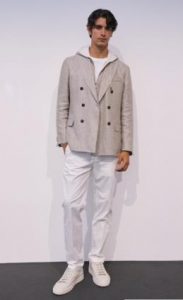 FOCUS: Urban Tailoring, Clean Outerwear, Seasonal Versatility
FOCUS: Urban Tailoring, Clean Outerwear, Seasonal Versatility
Fay’s coats and jackets struck the balance between technical construction and everyday wearability. Think parkas with polished finishes and storm-ready trench coats.
Educational Insight: Fashion design is often about balance. Fay teaches students how to infuse utilitarian needs with elevated finishes. Study how engineering and tailoring coexist to create wardrobe essentials that solve problems stylishly.
- PDF (Live Streaming) – Gender-Neutral Expression via Digital Couture
FOCUS: Deconstructed Layers, Futuristic Minimalism, Fluid Identity
PDF’s digital runway brought us layered tunics, reworked tailoring, and sculptural necklines that erased traditional gender cues. A manifesto for Gen Alpha fashion.
Educational Insight: For students in digital design and future fashion, PDF exemplifies how silhouette, tech-textiles, and inclusive thinking can shift industry paradigms. Their brand is an evolving conversation.
Five Concepts Fashion Students Should Study – Lessons from Day 1
As someone who’s spent over two decades nurturing creative minds, I often say fashion education is not just about how to sketch a silhouette or drape a muslin. It’s about cultivating a mindset that blends observation, experimentation, and relevance. Based on Day 1 of Milan Fashion Week, here are five foundational concepts every fashion student should absorb and practice:
- Visual Storytelling through Fabric and Form
Design is not just visual—it’s visceral. Each designer on Day 1 conveyed a story, whether it was Setchu’s minimalism rooted in Japanese philosophy or Uma Wang’s romantic fabric narratives. Understanding how fabric, color, and silhouette communicate is essential.
Discussion Prompt: When you design a garment, ask yourself: what story is it telling before someone even wears it?
- Cultural Intelligence and Global Influence
Fashion is not created in a vacuum. Boglioli’s minimalist suits, Valstar’s utilitarian jackets, and Ralph Lauren’s Ivy League flair are all rooted in cultural references. Your designs must understand and respect their origins.
Discussion Prompt: How can your designs reflect or reinterpret global styles while staying authentic to your voice?
- Functionality as Aesthetic
Gone are the days when fashion was only about looking good. MTL Studio and C.P. Company both emphasized how fashion needs to work—weather-resistant fabrics, adjustable fits, and modular silhouettes. Today, the function is fashion.
Discussion Prompt: Can you design something beautiful that also makes someone’s day easier, warmer, faster, or freer?
- The Power of Styling and Presentation
Look at how MSGM and Zanotti turned garments into statements through clever styling. The message often lies in the mix, not just the piece. Styling is where visual language comes alive.
Discussion Prompt: In your next project, plan the styling with as much intent as the garment. What accessories, hair, and setting will enhance your message?
- Brand Identity and Emotional Resonance
The most successful brands evoke emotion. Cuccinelli doesn’t just sell garments—he sells values. Fiorucci doesn’t just sell clothes—it sells energy. Fashion becomes powerful when it taps into identity and emotion.
Discussion Prompt: What feeling do you want your work to leave behind? Confidence? Comfort? Nostalgia? Think about the emotion first, then design around it.
Final Note from Your Mentor
Day 1 in Milan wasn’t just a celebration of aesthetics—it was a reminder that fashion, at its core, is a vehicle for meaning. It’s not about chasing fleeting trends or viral moments. It’s about anchoring your work in intention, emotion, in purpose.
Whether you dream of launching your own label, directing creative campaigns, revolutionizing fashion tech, or simply designing pieces that improve how people live and feel—know this: you are building more than clothes. You are building Identities. Movements. Futures.
Let the collections you’ve seen today be more than inspiration. Let them be the push you need to pick up your sketchbook again, to dig deeper into your design language, or to ask yourself why you started this journey in the first place.
Keep sketching. Keep questioning. Keep creating. Fashion belongs to the curious.
It rewards the brave.
Feeling unsure about your direction?
DM us. Sometimes the clarity you’re seeking begins with a conversation.
Stay tuned for Day 2, where we continue to decode the business of style, one powerful silhouette at a time!
